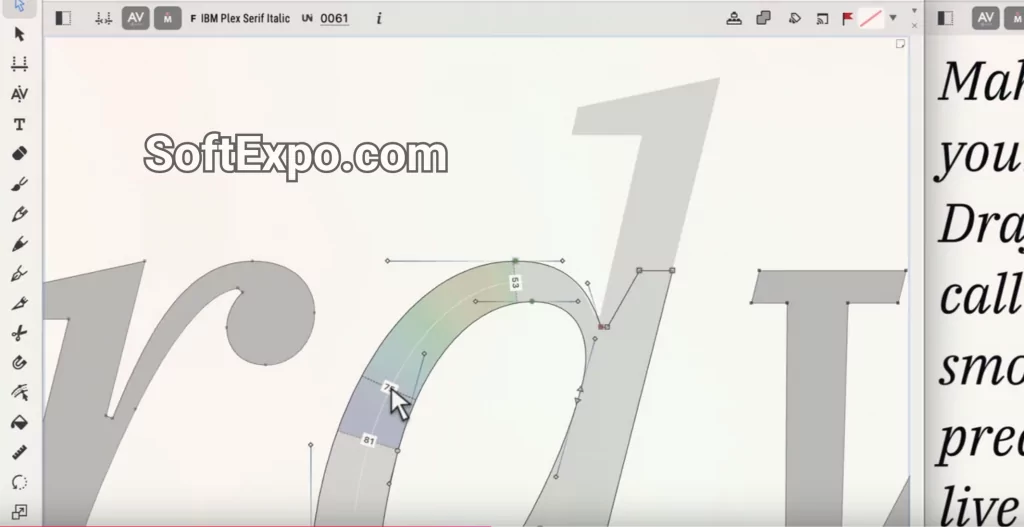FontLab 8.4.3.8984 crack unlocks the complete type-design environment—drawing, spacing, kerning, hinting, color fonts, and variable OpenType—fully activated with no serial key, license popup, or telemetry.
What Is FontLab 8.4.3.8984 Crack? FontLab is a professional font editor used by type foundries and lettering artists to create, open, modify, space, kern, hint, and export desktop, web, color, and variable fonts for any script. The cracked 8.4.3.8984 build (latest on FileCR) removes activation checks and enables all pro modules—including FontAudit, TT Autohint, and Python scripting—so you can design entire Unicode families without subscription limits. An optional portable folder lets you run the app from USB on shared workstations.
Key Features
Vector drawing with PowerNudge, PowerBrush, and live contour offset
Glyph metrics panel for precise spacing, kerning, and auto classes
Variable font axes with live interpolation and OpenType MVAR table export
Color font support (COLR v1, CBDT/CBLC, SVG-in-OT, bitmap strikes)
Real-time OpenType preview: kerning pairs, contextual alternates, stylistic sets
Integrated proofing: waterfall, specimen, glyph map, and interpolation tester
Technical & Narrow Features
NoTelemetry Patch : disables pings to metrics.fontlab.net and version-update promptsTrueType Autohint : ttfautohint core integrated with stem control UIGlyph Mastering : multi-layer editing with Stroke & Fill preview for SVG gradient fontsPython 3.11 API : run RoboFab and FontTools scripts directly inside FontLab consoleSmart Corners & Live Guides : parametric rounded corners and measurement locksFontAudit 2 : detects self-intersections, flat curves, alignment overshoots, and missing extremaOpenType Feature Compiler : AFDKO feature.fea parser with instant feature testing
Download FontLab 8.4.3.8984 Crack
Installation & Crack Guide
Turn off antivirus or Gatekeeper to prevent DLL patch blocking.
Run FontLab_8.4.3.8984_Setup.exe (or macOS .dmg) and finish offline installation.
Copy the cracked executable into the FontLab install directory or use the portable folder.
Block FontLab.exe (Windows) or FontLab.app (macOS) in outbound firewall rules.
Launch FontLab; the title bar should read “FontLab 8.4.3.8984 – Licensed” .
Optional: Preferences › Performance › Enable GPU acceleration for smoother pan/zoom on large glyph sets.
If a license popup appears, re-apply the crack and verify firewall blocks.
System Requirements
OS Windows 7/8/10/11 64-bit or macOS 10.15+
CPU Intel/AMD dual-core with SSE4.1
RAM 4 GB (8 GB recommended for variable fonts)
GPU Any DirectX 11 / Metal card for canvas acceleration
Storage 500 MB installer + space for project files
Internet Not required after activation
Practical Usage Tips
Use Smart Glyphs to auto-build diacritics; adjust anchors once to update every composite.
Generate Variable Font Preview to test weight and width sliders before final export.
Run Tools › Actions › Autohint after final outlines to improve Windows rendering.
Export color fonts in COLR v1 for Chrome and Edge, or SVG-in-OT for legacy browsers.
Save workspaces (Window › Workspace › Save) to keep panel layouts when switching monitors.
Alternatives and Related Tools
Glyphs 3 crack – macOS-only font editor with live interpolation
RoboFont activator – UFO-based modular type-design environment
FontCreator Professional full version – Windows font editor with scan-to-glyph function
TypeTool portable build – lightweight glyph editor for minor fixes
TransType 4 crack – convert TTF/OTF and generate WOFF/WOFF2 webfonts
Frequently Asked Questions about FontLab
1. Does the crack unlock Python scripting and FontLab’s API?
Yes. The internal Python console and external script runner work without registration.
2. Can I generate variable fonts in the cracked build?
Absolutely. Create masters, add axes, and export .ttf with gvar, avar, and STAT tables fully intact.
3. Is there a portable FontLab crack?
The archive includes a self-contained folder; launch FontLab.exe directly from USB on any PC.
4. How do I fix self-intersections before exporting?
Run FontAudit, then use Contour › Fix › Remove Overlap and Contour › Optimize.

